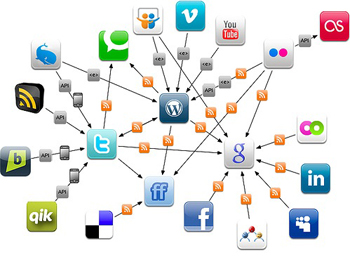Events with the Potential to Go Viral: Identification and Response
For centuries, only the news media had the tools to rapidly reach out and influence vast audiences to widely share a message. Without the help of the news media, a member of the public could not communicate with large audiences. Those days are over, forever.
New Tech Means Access and Mobility
 The past 5 years have shown us an amazing evolution in personal technology. Cell phones and smart phones provide mobile and rapid access to texting, Facebook™, Twitter™, photos, and live video. These resources are as easy to access as phone calls from home have been for decades.
The past 5 years have shown us an amazing evolution in personal technology. Cell phones and smart phones provide mobile and rapid access to texting, Facebook™, Twitter™, photos, and live video. These resources are as easy to access as phone calls from home have been for decades.
Speed, access, and affordability have made mobile communications technology commonplace. Today, nearly everyone, including children or people who are homeless, carry cell phones. That common device, system, and convenience has created an entirely new social dynamic, and the ability to cause some messages, right or wrong, good or bad, fun or folly, to seemingly take on lives of their own and to spread exponentially each second—to go viral and spread rapidly via the Internet, e-mail, or other media.
What Interests the Public is What Goes Viral
So what is likely to go viral? Catchy music, humor, and cute videos of animals that evoke pleasant emotions are quite popular. In fact, messages, images, and videos that evoke emotions of anger, frustration, or joy, are among those that quickly go viral.
 Yet, viral messages of all types can have a sharp edge. A popular band with a hit song that decides to suddenly advertise a live rooftop concert to millions of fans via social media has caused many a viral sensation, resulting in tens of thousands of fans arriving in less than an hour and generating a sudden massive traffic jam, panic, and jeopardizing public safety.
Yet, viral messages of all types can have a sharp edge. A popular band with a hit song that decides to suddenly advertise a live rooftop concert to millions of fans via social media has caused many a viral sensation, resulting in tens of thousands of fans arriving in less than an hour and generating a sudden massive traffic jam, panic, and jeopardizing public safety.
In an effort to predict what will go viral, we look to the practices of the news media. The news media has long held the public’s attention by focusing on what interests them. Like it or not, as the saying goes, if it bleeds, it leads. If the media didn’t give the public what they wanted, the media would be out of business. Adding to that, when the public finds something they like today, positive or negative, they share it, and with today’s mobile tech, that means it might just go viral.
In addition to action, emotion and the timing of events, here is a handy list of the 11 Cs of media interest: Change, Celebrity, Catastrophe, Children, Color (human interest), Conflict, Controversy, Corruption, Crime, Crisis, and of course, Critters. Think about the news that you see or read and you will find plenty of examples of the 11 Cs. You will also find these same news media interests in the social media shared by the public.
Another way to look at what has the potential to go viral: If you hear about something and find it interesting enough to share with just one other person, ask yourself, what if tens of thousands of people shared it too (as happens today via social media)? If so, would people take action? If people did take action, what would you need to do as a member of law enforcement?
Monitoring to Prepare for Traffic and Crowd Control Safety:
The monitoring of social media is not new. For years, companies have been monitoring it for marketing and reputation management, young people look for parties, and crooks troll for and find victims. Law enforcement’s ability to monitor social media can be done with minimal equipment costs, but it does take personnel, training, and a 24-hour-a-day focus to do it right. As we know, the sooner you know of an impending situation the better you can gather the information needed to address it, especially when events go viral.
 Monitoring for civil unrest is done for situational awareness of possible impending protests, so that law enforcement can prepare for traffic and crowd control safety needs while the public exercises their rights guaranteed under the First Amendment of the U.S. Constitution:
Monitoring for civil unrest is done for situational awareness of possible impending protests, so that law enforcement can prepare for traffic and crowd control safety needs while the public exercises their rights guaranteed under the First Amendment of the U.S. Constitution:
U.S. Constitution - Amendment 1 - Freedom of Religion, Press, Expression “Congress shall make no law respecting an establishment of religion, or prohibiting the free exercise thereof; or abridging the freedom of speech, or of the press; or the right of the people peaceably to assemble, and to petition the Government for a redress of grievances.”
Response
So what can you do if something does go viral in an unfortunate way? While we do plan and prepare, sometimes that is what happens. These 10 maxims for working with the news media also apply to law enforcement’s direct messaging to and with the public and are worth remembering:
- Be Open and Cooperative, Never Lie
- Personalize the Organization
- Develop Relationships
- Share Good Stories
- Respond Quickly
- Never say “No comment”
- It’s OK to Say, “I don’t know, (but I’ll find out)”
- If You Mess Up, Dress Up, and Fess Up
- Tell the Entire Story As Soon as You Can (The Big Dump)
- Prepare, Prepare, Prepare
1. Jones, Clarence. Winning with the News Media: A Self-Defense Manual When You’re the Story. Winning News Media, Inc. [8th Edition].
2. Gladwell, Malcolm. The Tipping Point; How Little Things Can Make a Big Difference. Little, Brown & Company, Inc.
3. International Association of Chiefs of Police (IACP) Center for Social Media www.iacpsocialmedia.org/
4. “Social Media” training video for law enforcement – California Commission on Peace Officer Standards and Training (POST) http://post.ca.gov/
5. “Social Media – Benefits, Your Cybersecurity & Criminal Investigations” training classes, California Peace Officers Association (CPOA) www.cpoa.org/
Captain Mike Parker
Los Angeles County Sheriff's Department
In collaboration with Melissa Bradley, COPS Office
Police and People Who Stutter | Partnerships for Preparedness | Events with the Potential to Go Viral | Tribal Policing Partnerships | Solving Missing and Unidentified Persons Cases | Advancing Police Legitimacy | Did you know…?
